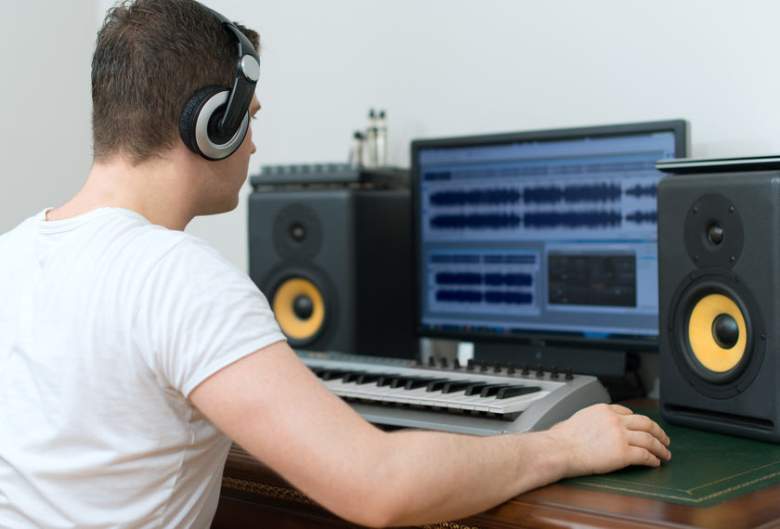
123RF.com (M Production)
If you are in the market for new studio monitors in your home studio, you may feel a bit overwhelmed with the seemingly unlimited number of options that are available on the market. The good news here is that making the perfect choice does not have to be a stressful task. Here, we will be reviewing the eleven best studio monitors for mixing and mastering so that you can make the best decision to fit your musical needs.
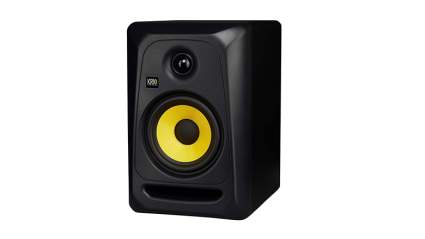
|
Amazon Customer Reviews
|
Price: $292.99 Shop at Amazon | Shop now Read our review |
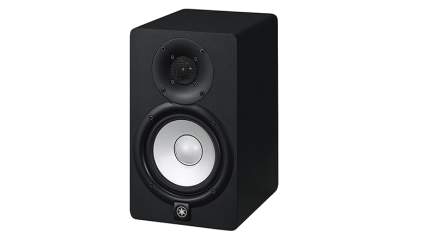
|
Amazon Customer Reviews
|
Price: $199.99 Shop at Amazon | Shop now Read our review |
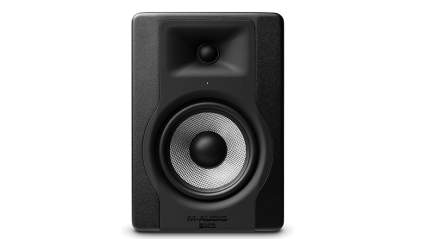
|
Amazon Customer Reviews
|
Price: $149.00 Shop at Amazon | Shop now Read our review |
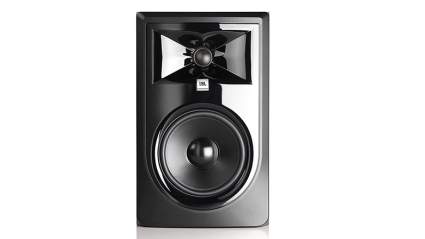
|
Amazon Customer Reviews
|
Price: $458.00 Shop at Amazon | Shop now Read our review |

|
|
Price: $369.99 Shop now at Zzounds | Shop now Read our review |
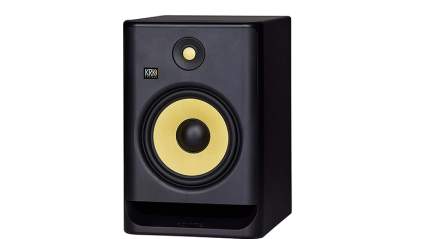
|
Amazon Customer Reviews
|
Price: $249.99 Shop at Amazon | Shop now Read our review |
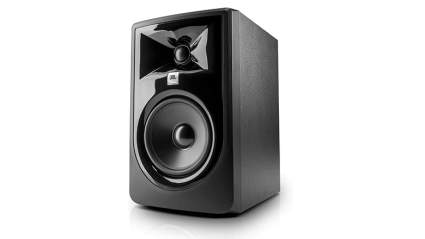
|
Amazon Customer Reviews
|
Price: $229.99 Shop at Amazon | Shop now Read our review |
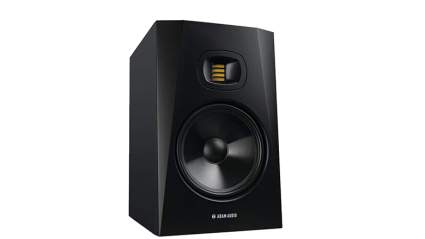
|
Amazon Customer Reviews
|
Price: $299.99 Shop at Amazon | Shop now Read our review |

|
Amazon Customer Reviews
|
Price: $720.38 Shop at Amazon | Shop now Read our review |
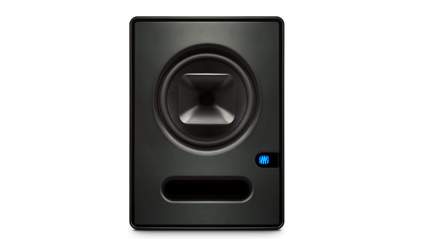
|
Amazon Customer Reviews
|
Price: $999.99 Shop at Amazon | Shop now Read our review |

|
|
Price: $999.00 Shop now at Zzounds | Shop now Read our review |
-
1. KRK Classic 5 Professional Bi-Amp 5″ Powered Monitors
Pros:- Great Sound
- Super Tunable
- Awesome Price
- Automatic Standby
Cons:- LF Control is pretty temperamental
- No LCD screen
- A little bulky
The KRK provides you with a very nice layered 5” glass aramid driver that covers the lower frequencies. And with the aid of a 1” soft dome tweeter, the KRK comes quite balanced straight out of the box. The KRK was designed by utilizing a variety of concepts from their highly-renowned “ROKIT” line of monitors. These monitors also boast the available option of tweak-capability, and the high frequency adjustment controls offer you a range of -2dB to +1dB, whereby the low frequency adjustment controls can run between -1dB to +2dB (this is based upon the acoustics of the room you are in, however). The KRK is incredibly user-friendly and provides you with a lot of flexibility. Not only can you easily adjust these monitors for room dynamics, but you can also easily adjust them for the type of music you’re working with.
If you are planning on using these monitors for mixing situations, the EQ controls on the KRK’s are also super user friendly as well. There are specific frequency ranges that you can easily pinpoint depending on the music you are planning to work with. You can easily set the LF and the HF to whatever is going to work the best for any application and this feature truly goes about enhancing your sessions. This option can also assist in being able to tune in to any EQ issues that you may find yourself experiencing in your recording space. It is super important to make a note of the fact that the LF control can change things when you are not expecting it, so it is really important to make sure that you get to know the setting before you dial in.
All in all, the KRK’s are a really nice set of monitors. They are fully capable of being able to work with virtually all musical situations in terms of both mixing and tracking. They give you a ton of flexibility and great sound quality overall, and for the price, you really can’t beat that.
Find more KRK Classic 5 Professional Bi-Amp 5" Powered Monitors information and reviews here.
-
2. Yamaha HS5 Powered Studio Monitor
Pros:- Easy to Use
- Awesome Audio
- Compact
- Super Versatile
- Durable
Cons:- Does Not Come in a Pair
- Delayed Bass Response
- Not Accurate Lows
- Cables Not Included
This 5” monitor is the smallest one in the Yamaha HS series. It boasts newly developed transducers, which provide users with a high quality, yet smaller in size monitor. The H5 is targeted for anyone ranging from beginners to professionals alike and it is intended to give users a highly balanced sound at a very affordable price tag.
In terms of sound, the highs and mids are clear and offer quite a flat and neutral response, which is ideal for those who are seeking to mix and master their music. If you are seeking to be able to pinpoint faults in mixes, this monitor can certainly help you out. The biggest downfall to the H5 can is that this one also falls a bit short in the lows-end, so if you are seeking a monitor to be able to work with more bass-heavy music, you may want to consider adding in a subwoofer to coincide with this monitor.
The Yamaha HS5 is the prime example of a studio monitor that goes above and beyond providing users at a great price. As previously stated, the only drawback is that lack of bass, which can be solved by adding a subwoofer at some point. If you are looking for a crisp and flat sound these ones go above and beyond what you may expect.
Find more Yamaha HS5 Powered Studio Monitor information and reviews here.
-
3. M-Audio BX5 D3
Pros:- LF and HF Drivers Have Amplifier Output
- Upgraded Tweeter Waveguide Provides More Broad Sweet Spot
- Small, But Tough
Cons:- No Hi-Freq EQ
- Not Sold in Pairs
- No cables or Leads, Only Power Cord
The M-Audio BX5 has consistently proven to be a very reliable and affordable small-format two-way studio monitor. The BX5 studio monitors offer a number of updated features such as a vinyl-laminated MDF cabinet, a five-inch woven Kevlar woofer, and a one-inch silk-domed tweeter (the tweeter and the woofer are also both magnetically shielded).
The BX5 also boasts a rear-ported design in order to be capable of enhancing low-end projection. Other features of the rear panel include TRS and XLR jack inputs, volume control, and “Acoustic Space” bass settings (-2dB, -4dB, and Flat). The jack inputs and XLR inputs can also connect as one. If you are wanting a compact and affordable set of monitors, the M-Audio BX5’s are plain and simply some of the best on the market.
-
4. JBL Professional 306P MkII
Pros:- Revealing and Flat Sound
- Sleek Design
- Dynamic, Wide Soundstage
- Affordable
Cons:- Low-Level Amp Sound
- Not Sold in Pairs
- Can Hiss
The JBL Professional 306P MkII is 6” studio monitor features next-generation HF and LF transducers, a super-sleek new design and a brand new Boundary EQ. They provide users with several new design improvements that have resulted in advanced damping that offers first rate transient response as well as exceptional deep bass and low harmonic distortion. The JBL Pro. has a broad sweet spot that offers a neutral frequency response over a wider area giving you the ability to fine-tune any type of mix you are working with, even if you plan to listen off-axis.
All in all, the JBL Professional 306P Mkll is a really excellent choice, particularly for the price point. They are insanely simple to set up, right out of the box and they sound great. While the sound and bass on this monitor is doable to work with, if you are seeking a sound that is more bass heavy, you may opt to invest in a subwoofer for this one, but it is certainly not necessary
Find more JBL Professional 306P MkII information and reviews here.
-
5. Yamaha HS8 Active Studio Monitor
Price: $369.99Pros:- Concise Clarity
- Very Well-Built
- Stable Bass Output
Cons:- Pricey
- Can Squak During Treble
- May Need a Subwoofer
If you have a small or medium-sized studio space, the Yamaha HS8 monitor is going to be a great option. The HS8 is an 8” monitor that is more than capable of filling your studio space with ample sound and concise clarity, and you do not need a dedicated subwoofer to coincide with it.
The sound quality of this one, particularly in comparison to the smaller Yamaha HS5 model, is simply unmatched, and the low-end offers users a thunderous thump that handles bass well. You can comfortably run these without a subwoofer. If you like bass-heavy music these will satisfy. But it’s not all about the low end. The mids and highs are also great. Mids are warm with plenty of depth. The highs are crisp and clean. Balance across the frequencies is also solid with a nice flat response. For those mixing and mastering their own music, you’ll be able to hear where your mix needs work.
Find more Yamaha HS8 Active Studio Monitor information and reviews here.
-
6. KRK RP8G4 Rokit 8 Generation 4
Pros:- Comes with Isolation Pads
- Impressive Build-Quality
- Broad Sweet Spot
Cons:- Tuning is Required to Get the Best Sound
- Can Hiss at Certain Levels
- A Bit Bulky
The KRK RP8G4 Rokit 8 Generation 4 Powered Studio Monitor is an 8” monitor that can be purchased individually or as a set. They are a bit on the higher end of the price spectrum, but they are well worth the investment for anyone who is looking for an 8” KRK studio monitor. You need to break these ones in a bit, but once they are you will find that the sound quality is truly unbeatable.
The KRK Rokit 8 has decent enough balance and the low end is more pronounced as well. This response is perfect for anyone who doesn’t want to incorporate a subwoofer (but can be a drawback if you are seeking something that will allow for flat response listening). The highs are super crisp and clean and the mids are prime, which provides the user with a warm sound that is just what they need to reduce ear fatigue.
Find more KRK RP8G4 Rokit 8 Generation 4 information and reviews here.
-
7. JBL 305P MkII 3 Series Powered Studio Monitor
Pros:- Abundant Sound Stage
- Super Durable
- Great Tuning options
- Very Good Bass Output
Cons:- Not Really Balanced
- Struggles with Deep Bass at Maximized Volumes
- Not Very Open-Sounding
The JBL 305P MkII 3 Series Powered Studio Monitor is one that is really well built and provides users with really great, punchy sound quality. The 305P has some really impressive features including the JBL exclusive Image Control Waveguide, which boasts a much wider sound stage than the competition, which is greatly needed for larger studio spaces that need a more broad sweet spot.
This monitor also provides you with a low-frequency response which leads to a larger punch in the low end (bass fans will love this), while also maintaining very good highs and mids. It should be noted that the low-end emphasis sounds good at a medium or high volume, but when it is played at lower volumes you can hear a slight hiss. While this fact is not necessarily an uncommon issue for studio monitors, if you plan on playing music at a lower volume, you may want to take note.
Find more JBL 305P MkII 3 Series Powered Studio Monitor information and reviews here.
-
8. Adam Audio T8V Active Studio Monitor
Pros:- Large-scale Sound
- Consice Treble Performance
- Very Nice Bass Balance
Cons:- Needs Volume and Space to Really Boom
- Possibly Too Bass Heavy for Some
- No LED Power Indicator
The Adam Audio T8V Active Studio Monitor is an awesome studio monitor for anyone who is looking for great quality at a decent price. The T8V offers an RCA input, which is something that is quite rare to see on studio monitors making this one significantly more easy to be able to integrate for any hi-fi applications you may seek to work on.
The T8V provides you with top-rated execution of active monitors in this specific price range. If you plan on any type of hi-fi use, plan on getting some amplification as the bass response is not crazy powerful. This one also is pretty large in its size, so if you are working with limited space in your studio, you may want to look into a smaller studio monitor.
Sonically, these monitors come across as precise, punchy, and quite detailed. The T8V also has a wide sweet spot and legit stereo image. As is the case with all studio monitors, technical imperfections may exist in these monitors, but not to the point where you can’t produce awesome and consistent mixes, you will only need to take a little bit of extra time to dial them in to fit your needs.
Find more Adam Audio T8V Active Studio Monitor information and reviews here.
-
9. Neumann KH 120A Active Monitor
Pros:- Flat Response
- Great Sound Quality
- User-Friendly
Cons:- On the Pricier End
- Cords are Super Bulky
- Doesn't Come in a Set
The KH120A is a tiny, but mighty studio monitor that is a great fit for any studio. This one is 5.25” in size and provides users with all of the benefits that a composite-sandwich woofer has to offer from a front-port design. The KH 120A brings a good deal of percussion and punch along with a well-pronounced low-end response (52 Hz, ±3 dB) as measured in free-field. The monitor’s cabinet boasts a front baffle that is a machined single piece of aluminum and the interior sports a non-parallel construction that is designed to cut down on internal standing waves giving you more accurate and lower-frequency reproduction characteristics.
The KH120A is also equipped with a metal and mesh grille on the woofer and this allows for the better defense of the monitor’s components in more hostile studios (punk and metal bands take note). Neumann also utilizes their patented Elliptical Mathematically Modeled Dispersion™ waveguide, which offers you a much wider sweet spot. This one also comes with the features of phase alignment (complete with subwoofer output) and also an attenuated vertical dispersion, which helps to reduce phase-canceling in early reflections that come off of your work surfaces. If you are seeking a high-quality studio monitor that is sure to stand up to any challenge you put it through, this one’s for you.
Find more Neumann KH 120A Active Monitor information and reviews here.
-
10. PreSonus Sceptre S8
Pros:- Really Tight Low Ends, Solid Mids, Clear Highs
- Crisp Sound Quality
- Balanced Room Sound
Cons:- Up Close, The Amp Can Have a Slight Background Hiss
- Pricier Option
- No Power-Saving Options
The PreSonus Sceptre S8 CoAxial Active Studio Monitors are incredibly accurate and concise and it really is hard to find anything wrong with these. The sweet spot is extra wide, so regardless of the size of your studio you can be sure to find well-balanced sound and the imaging is crazy clear. It should be noted that the bass frequencies can get minutely covered up if you plan on using only a satellite pair of S8s while you are working with tall mixes, this issue can be easily resolved by using a subwoofer that is turned down quite low to counter.
The Sceptre S8 is PreSonus’ boasts a coaxial design and is a next-generation two-way studio monitor with acoustic adjustment controls that include a 32-bit, 96kHz, dual-core processor, along with the incredibly advanced “Temporal Equalization” technology. This achieves a wide panoramic sound staging, surprising details, and excellent dynamics. When you create music, you need to be able to concisely hear the whole process, and with the help of the Sceptre S8 studio monitors, that is precisely what you will find yourself accomplishing!
-
11. Avantone Pro CLA-10A Chris Lord-Alge Active Monitor System
Price: $999.00Pros:- Basically An Active NS-10
- Great Punch
- Really Durable
Cons:- Really Bright Sound
- Logo is a Bit Lacking
- Pricier Option
The Avantone Pro CLA-10A Chris Lord-Alge Active Studio Monitor System looks like both a CLA-10 and also an NS‑10, the defining features come in the way of a small “A” and a jointless white cone in the logo. The print quality of the logo is a bit patchy due to the fact that the screen‑printing process failed to work well with the texture of the painted black veneer surface of the monitors.
On the back of the CLA-10A, you are going to find the standard control panel and input, as well as the active monitor heatsink. The connections of these monitors are unbalanced photo inputs, a balanced combi XLR, and the controls are made-up of a ground‑lift switch, and two stepped knobs for input sensitivity knob and VTPC (Variable Tissue Paper Control).
The CLA-10A provides users with an active monitoring system, custom-designed 180mm AV10_MLF low-frequency driver, and 35mm AV10-MHF high frequency silk dome-based tweeter. These studio monitors also give you the opportunity to use that rear-mounted VTPC knob, which gives you the freedom to simulate everything from a horizontal “Studio” version to the vertical “M” model and anything in-between. And the tone control more than accurately can enable users to select the tweeter brightness that is going to work best for their personal needs and desires.
Find more Avantone Pro CLA-10A Chris Lord-Alge Active Monitor information and reviews here.
What to Look for in a Studio Monitor
This depends on what you are looking to get out of your music and mixes, but the first thing you need to take into consideration is what your budget is for purchasing them in the first place. Once you have your budget set, you can then start to question what you are looking to do with your studio monitors. Understanding the sound you are looking to achieve can help you pinpoint and narrow down which monitors are going to be the best fit for your needs and desires at a budget that works for you.
It is important to take note of the fact that the main goal of your studio monitors is accuracy, not necessarily just sounding good (unlike regular speakers). Monitors offer the finest platform for being able to truly put the final touches on your mixes and don’t add overwhelming bass or a more clear high-end. Conversely, they expose issues related to the frequency that allow you to fix them before finalizing your project. One thing to consider when you are looking into studio monitors is that if the sound of them seems a little bit under-powered or flat you may have found a great fit.
What Makes a Studio Monitor Great?
A great studio monitor needs to have an array of specific qualities that include wide frequency ranges that are more than capable of reproducing low-end and high-end sounds free of distortion. Studio monitors should also have built-in amps called active monitors and should also eliminate the need for an external amp. A great studio monitor should also have a flat sound that doesn't have any sort of altering effects on your actual studio space. Finally, a great monitor should also highlight weaknesses in your recordings, which gives you the opportunity to catch them and edit properly.
Do I Need a Separate Subwoofer?
A subwoofer reproduces low-end sounds precisely and they are critical for being able to successfully create bass-heavy audio. Bass can get distorted really easily on average monitors, so having a subwoofer can be incredibly helpful. If you are planning on investing in a separate subwoofer, you need to take into consideration size and what the layout of your studio is as improper placement of a subwoofer can mess with your sound and ultimately make a subwoofer futile.